How do Banks Calculate EMI on Home Loans Calculating Equated Monthly Installments (EMI) for home loans can seem daunting. It’s crucial for borrowers to grasp how banks determine these payments to secure their dream property. So, how do banks calculate EMI on home loans? The process is straightforward: it involves multiplying the principal loan amount by the applicable interest rate and considering the loan tenure. Factors such as home loan interest rates, the total loan amount, and repayment timing also play a role in the calculation.
Loan amounts can range from ₹1 Lac to ₹10 Cr, significantly affecting the EMI. The repayment period can vary from one year to thirty years, offering flexibility based on financial situations. Utilizing a home loan EMI calculator provides estimates and insights into future payments. This tool empowers users to make informed financial decisions by demystifying complex calculations.
Table of Contents
Key Takeaways
- The EMI calculation depends on the principal amount, interest rate, and loan tenure.
- Loan amounts can range from ₹1 Lac to ₹10 Cr, impacting the EMI.
- Home loan tenure typically spans from 1 year to 30 years.
- Using a home loan EMI calculator simplifies the understanding of monthly payments.
- Interest rates influence the EMI significantly and can vary among lenders.
Understanding EMI: The Basics
Equated Monthly Installments, or EMI, are my fixed monthly payments towards a home loan repayment. They combine the principal amount I borrowed with the interest on the outstanding balance. It’s crucial to grasp this concept for effective financial planning.
There are two ways to calculate EMIs: the flat-rate method and the EMI reducing-balance method. The latter is often more cost-effective, resulting in lower interest payments over time. For instance, a $500,000 mortgage at 3.5% interest over ten years would cost me about $5,625 monthly with the flat-rate method. However, the reducing-balance method would reduce my payments to roughly $4,944.29.
This difference shows the importance of understanding EMI calculations. It affects not only my monthly costs but also my long-term financial health. With fixed monthly payments, I can better plan my budget, knowing exactly what to set aside for my home loan each month. It also makes decisions easier when considering pre-EMI for properties under construction or the start of my loan repayment.
| Method | Monthly Payments | Total Interest Paid |
|---|---|---|
| Flat-Rate | $5,625 | Higher |
| Reducing-Balance | $4,944.29 | Lower |
Understanding these aspects and methods influences my loan repayment strategy. It helps me make informed decisions about my financial commitments.
What is an EMI in Home Loans?
Often, people ask what is EMI, particularly when discussing home loans. EMI stands for Equated Monthly Instalment. It’s the regular payment I make to repay my home loan, covering both the principal and interest. Knowing the EMI meaning is key for anyone considering a mortgage.
The EMI calculation uses a specific formula: EMI = P x R x [{(1 + R)^N} / {1 – (1+R)^N}]. Here, P is the loan’s principal, R is the monthly interest rate, and N is the repayment months. This formula helps determine my monthly payment.
Online EMI calculators are available from banks and financial institutions. These tools let me quickly figure out my EMI based on the loan amount, interest rate, and repayment term. I’ve found that a longer repayment period can reduce my monthly EMI but increases the total interest paid over the loan’s life.
Calculating the EMI shows me how much I can borrow without overextending my finances. This knowledge helps me plan my budget and ensure my monthly payments fit within my financial goals.

How Do Banks Calculate EMI on Home Loans
Banks calculate the Equated Monthly Installments (EMI) on home loans by considering several key factors. These include the principal loan amount, the interest rate, and the loan tenure. This EMI calculation method helps understand how affordability is determined over the loan’s life.
The formula for calculating EMI is straightforward:
| Variable | Description |
|---|---|
| P | Principal loan amount |
| R | Monthly interest rate (annual rate divided by 12) |
| N | Total number of months for repayment |
Using the formula: EMI = P x R x [{(1 + R)^N} / {1 – (1+R)^N}], one can determine the precise monthly payment. For instance, if I were to take a home loan of ₹60 lakhs at an 8.50% interest rate over 20 years, the calculated EMI would amount to ₹52,069.
Online EMI calculators, often provided by banks, simplify this process. By entering the loan amount, interest rate, and tenure, I can receive an immediate breakdown of my monthly payments. Such banks EMI calculation tools, including those offered by Axis Bank, demonstrate not only the EMI but also the principal and interest components throughout each repayment.
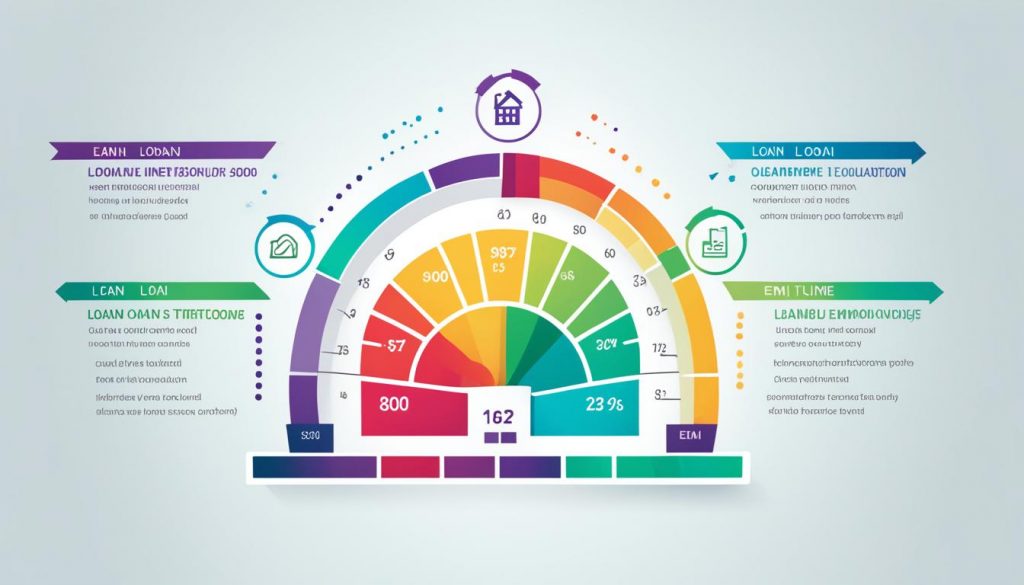
Utilizing tools such as Excel sheets further simplifies the process of calculating home loan EMIs, using the formula (PMT). This method allows for an evaluation based on various inputs for effective financial planning. Tracking monthly and annual payments becomes essential for maintaining financial balance over time, ensuring my loan remains manageable and stress-free.
EMI Calculation Formula Explained
Understanding the EMI calculation formula is crucial for anyone looking to secure a home loan. This formula determines the monthly payment and sheds light on how different components affect the financial commitment. The key components of the formula significantly influence my monthly payments.
Components of the EMI Formula
The EMI calculation formula can be expressed as:
E = P x R x (1 + R)^N / [(1 + R)^N – 1]
Where:
- P = Principal amount (the total loan amount borrowed)
- R = Monthly interest rate (annual rate divided by 12)
- N = Loan tenure in months
For instance, if I borrow $200,000 at an annual interest rate of 5% for 20 years (240 months), my monthly interest rate is about 0.4167%. This detail is vital for an accurate EMI calculation, showing how the formula works.
Breaking Down Example Calculations
Let’s look at a breakdown EMI example for better understanding. Assuming the same loan details:
| Component | Value |
|---|---|
| Principal Amount (P) | $200,000 |
| Annual Interest Rate | 5% |
| Monthly Interest Rate (R) | 0.4167% |
| Loan Tenure (N) | 240 months |
| Calculated EMI | $1,319.91 |
Tools like GoPocket’s EMI calculators make it easy to compute these figures. Varying loan amounts, interest rates, and tenures result in different EMI payments, highlighting the dynamic nature of the calculations.

Factors Affecting EMI Calculation
Understanding the factors that influence EMI calculation is essential for anyone considering a home loan. Key variables can significantly affect monthly payments. This section will delve into how the loan amount and interest rates impact the final monthly payment.
Loan Amount: Impact on EMI
The loan amount directly influences the EMI calculation. A larger loan amount results in higher EMI due to the extended repayment period. Lenders finance 75% to 90% of the property’s value, setting the Loan-to-Value (LTV) ratio. This ratio affects the loan amount I can obtain.
Home Loan Interest Rates
Interest rates are crucial in determining EMIs. Home loan rates start around 8%. The choice between fixed and floating interest rates affects payment consistency. Fixed rates ensure consistent EMI, while floating rates may fluctuate with market conditions. Choosing a lower interest rate can benefit me, especially if I’m a woman and eligible for rate reductions.
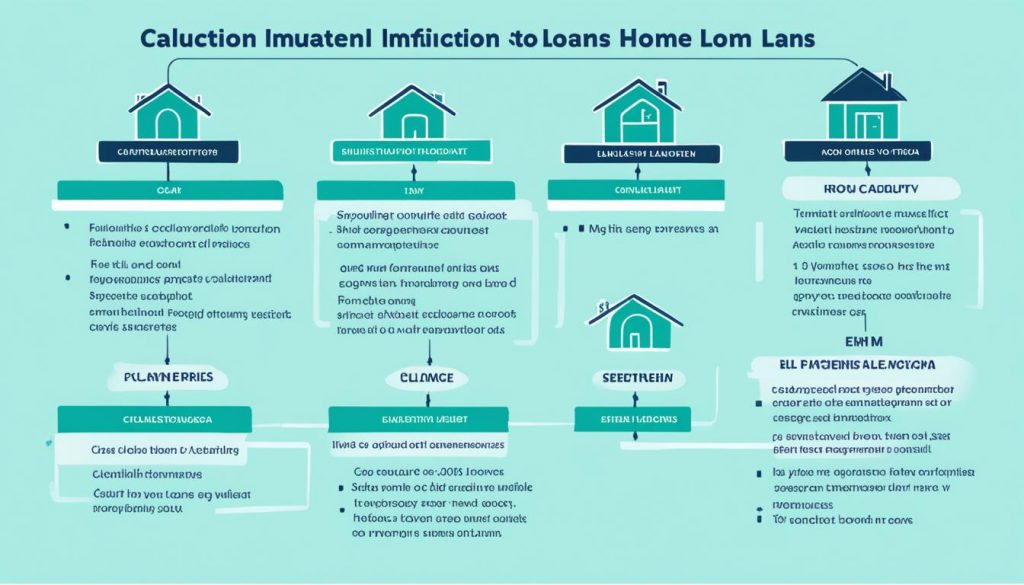
Using a Home Loan EMI Calculator
Managing a home loan can be overwhelming, with various factors influencing monthly payments. A home loan EMI calculator is a crucial tool in this process. It provides a detailed breakdown of my EMI obligations, aiding in my financial planning.
Benefits of Online Calculators
Online EMI calculators offer significant advantages, making them vital for anyone looking into a home loan. Key benefits include:
- Quick Calculation: This calculator enables me to swiftly estimate my monthly payments by inputting loan amount, interest rate, and tenure.
- Detailed Payment Schedule: It delivers an exact EMI amount and a detailed payment schedule, illustrating the breakdown of principal and interest payments over time.
- Informed Decision-Making: Knowing potential EMIs, I can adjust the loan amount or tenure to align with my budget, ensuring my financial health remains intact.
- Cost Savings: By exploring different scenarios, I can identify ways to minimize interest payments. This includes the impact of a larger down payment or refinancing at a lower rate.
- Ease of Use: The accessibility and simplicity of online EMI calculators reduce confusion, enabling me to secure the best loan possible.
Using a home loan EMI calculator streamlines the financing process. The benefits of online EMI calculators empower me to make informed decisions. This ensures my financial planning remains strong and effective.

Loan Tenure: A Key Factor in EMI
Loan tenure is crucial for grasping the intricacies of Equated Monthly Installments (EMI) in home loans. The loan tenure importance is evident through its direct influence on my monthly payments. Long-term home loans can extend up to 30 years, offering flexibility with smaller EMI amounts. This is particularly beneficial for those with a limited budget.
Opting for a longer tenure means my monthly payments decrease, making financial management easier. Yet, it’s crucial to recognize the tenure impact on EMI. Longer tenures can result in higher interest payments over time. Conversely, short-term loans, under two years, come with higher interest rates but lower total interest payments.
For strategic EMI planning, an online EMI calculator is indispensable. It allows me to input loan details like amount, interest rate, and tenure for informed financial decisions. The EMI formula, EMI = [P x R x (1+R)^N]/[(1+R)^N-1], clarifies the calculation behind my monthly payments. Here, P is the loan sum, R the monthly interest rate from the annual rate, and N the loan duration in months.
Striking a balance between manageable EMIs and the loan’s total cost is vital. Overlooking additional payments can extend my loan term and increase interest costs. By thoughtfully considering these elements, I can better navigate my financial situation.
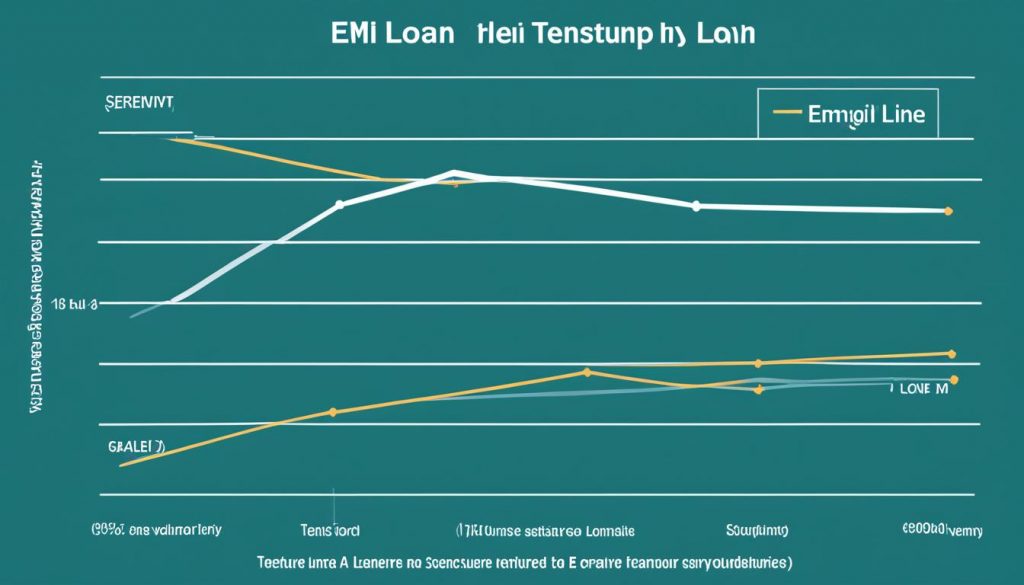
What is Loan Amortization?
Loan amortization is key to grasping how my home loan functions. It’s the process of paying off my debt over time with regular payments that cover both the principal and interest. An amortization schedule shows me how my payments are structured, aiding in better financial planning and budgeting.
Understanding Loan Amortization Schedules
An amortization schedule details how I’ll repay my loan by a certain date. It outlines each payment, showing what goes to interest and what reduces the principal. Banks use these schedules to be clear about my repayment duties.

Today’s accounting tools and spreadsheets can easily generate amortization schedules. This makes tracking payments straightforward. Knowing the principal part of each payment helps me lower my debt gradually. This structured approach lets me anticipate my financial duties well.
However, initial payments often focus more on interest, which means my principal balance doesn’t decrease quickly. In cases of negative amortization, my payments might not cover all the interest, increasing my debt. This highlights the need to grasp loan amortization and use online tools for precise management.
| Loan Example | Loan Amount | Interest Rate | Loan Term | Monthly Payment |
|---|---|---|---|---|
| 30-Year Mortgage | $240,000 | 5% | 30 years | $1,288 |
Reviewing and adjusting my payment plan regularly helps me make extra payments. This can reduce interest and the total I pay. Being proactive in managing my home loan is crucial.
The Importance of EMI/NMI Ratio
The EMI/NMI ratio is crucial for evaluating my ability to handle loan repayments relative to my income. Lenders scrutinize this ratio to gauge my financial health and determine my loan eligibility. It’s vital to grasp how this ratio is calculated and its implications for loan acquisition.
How it Influences Loan Eligibility
Calculating the EMI/NMI ratio means dividing my monthly EMI by my net monthly income (NMI). Lenders generally look for a ratio between 20% to 30% for loans like mortgages and personal loans. A higher ratio suggests I can manage repayments well, making me more appealing to lenders.
Lenders consider important deductions like taxes and monthly expenses when calculating NMI. This approach provides a realistic view of my financial situation before loan approval. Typically, lenders prefer an EMI/NMI ratio under 50-55%, depending on my annual income.
Those with lower NMIs might encounter higher interest rates or collateral demands. If my NMI is below the lender’s minimum, my loan could be denied. On the other hand, excellent credit profiles may relax EMI/NMI ratio standards, allowing for larger loans.
Using a personal loan EMI calculator is crucial for assessing my loan repayment capacity. This tool helps me determine the maximum loan I can afford, considering my current debts and future financial plans.
| EMI/NMI Ratio (%) | Loan Eligibility Criteria | Interest Rates |
|---|---|---|
| 20-30 | Minimum NMI required for various loans | Higher rates may apply for lower NMIs |
| 50-55 | Preferred ratio for loan approval | Standard interest rates |
| Over 55 | Potential for larger loan amounts | May receive better rates with higher NMI |
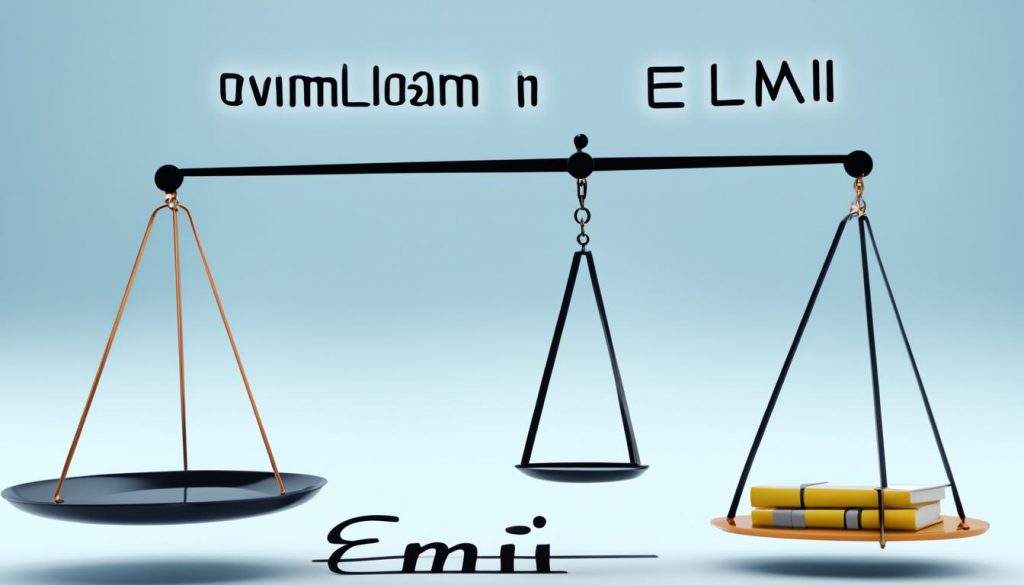
Calculating Home Loan EMI on Excel
Microsoft Excel simplifies the process of calculating home loan EMIs, making financial management easier. With a few straightforward formulas, I can quickly figure out my monthly payments. This is based on the loan’s details.
To begin, I must fill in crucial values in certain cells:
- Loan Amount: Enter this in cell B2.
- Interest Rate: Put the annual interest rate as a percentage in cell B3.
- Loan Tenure: This should be in months and goes in cell B4.
The key Excel formula for EMI is:
=PMT(B3/12, B4, -B2)
This formula works out the EMI using the entered values. I can also find out the interest paid monthly with another formula:
=B2 * B3/12
To see how much principal I pay monthly, I use:
=B5 – B6
Creating a loan amortization schedule needs several columns:
| Month | Opening Balance | EMI | Interest Paid | Principal Repaid | Closing Balance |
|---|---|---|---|---|---|
| 1 | B2 | Calculated with =PMT(…) formula | Calculated interest from =B2 * B3/12 | Calculated principal from =B5 – B6 | Calculated closing balance |
Calculating the average EMI requires a detailed formula:
EMI = (P X R/12) X [(1 + R/12) ^ N] / [(1 + R/12) ^ N-1]
Factors that affect EMI include the loan amount, repayment term, interest rate, and any margins. Unforeseen factors like floating interest rates or progressive repayment plans can also impact the calculation.
Knowing my EMI before getting a home loan is key for good financial planning. It helps me get the best loan deal, tailor terms, and avoid rejection. This strengthens my credit score.
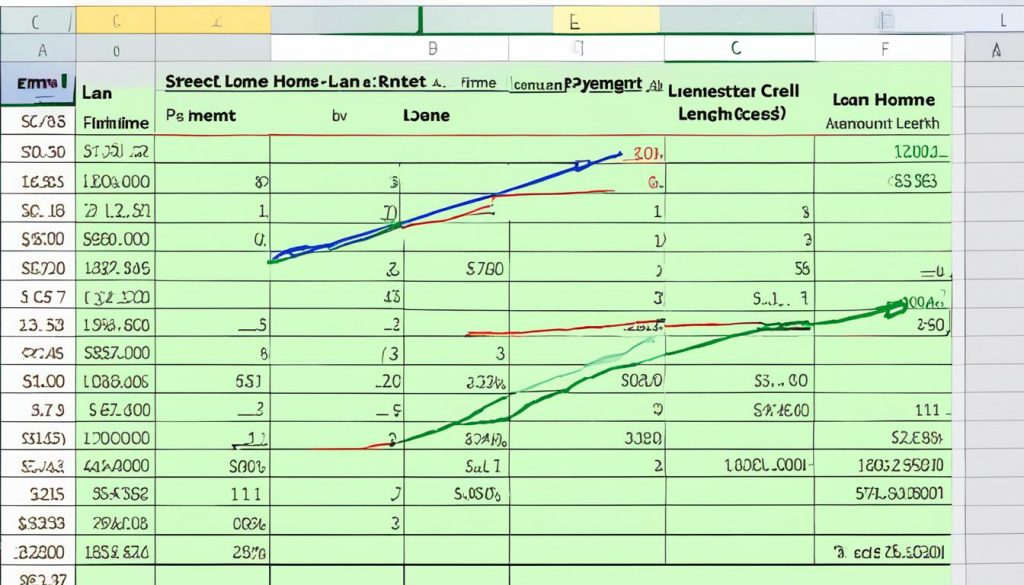
Common Mistakes in EMI Calculations
My initial foray into home loans revealed the critical importance of understanding EMI calculation errors. These errors often trip up many individuals, leading to significant financial strain. It’s crucial to recognize and avoid these pitfalls to ensure sound financial planning.
Entering incorrect loan amounts into an EMI calculator is a significant mistake. Such errors can drastically alter the estimated monthly payments. Ensuring accurate figures is vital for a precise monthly payment forecast. Another common oversight is the omission of processing fees from calculations. These fees, if ignored, can misrepresent the true financial commitment.
Interest rates can fluctuate widely, impacting EMI calculations. Selecting an incorrect interest rate can lead to misleading results. Early awareness of this helped me better understand my potential monthly payments. Furthermore, the loan term’s length is often overlooked, yet it significantly influences EMI amounts. Shorter terms increase EMIs, while longer terms decrease them, affecting the total interest paid.
Prepayment options are frequently overlooked, leading to inflated EMI estimates. This oversight can leave borrowers unprepared for various repayment scenarios. Utilizing tools like the personal loan EMI calculator has been crucial in sidestepping these errors. These tools provide a detailed view of repayment terms, aiding in effective planning.
Seeking advice from a financial advisor is highly recommended before finalizing a loan. Their expertise can navigate the complexities of loan decisions, steering borrowers clear of common pitfalls. This guidance is invaluable for those aspiring to own a home.

| Mistake | Impact |
|---|---|
| Incorrect Loan Amount | Distorts EMI estimates and may lead to underestimating monthly payments |
| Neglecting Processing Fees | Results in an inaccurate picture of the total loan cost |
| Wrong Interest Rate | Significantly alters EMI calculations |
| Ignoring Loan Term | Leads to unexpected monthly installments |
| Overlooking Prepayment Options | Prevents accurate long-term financial planning |
Tips for Managing Home Loan Payments
Effectively managing home loan payments demands strategic planning and discipline. A crucial step is creating a budget that includes my monthly EMI obligations. By monitoring my income and expenses, I can pinpoint areas to cut costs, ensuring loan repayments take priority.
Building an emergency fund is vital to prevent defaulting on payments due to unexpected events. This fund offers peace of mind and serves as a financial safety net during tough times. Additionally, setting up auto-debit for mortgage payments helps avoid late fees. This approach ensures payments are made on time, which is essential for a good credit score.
Regularly reviewing mortgage agreements is essential. It allows me to reassess my financial situation and seek out better deals. Understanding the breakdown of each EMI payment, including the principal and interest components, aids in better budgeting and future planning.
Exploring prepayment options can significantly reduce interest costs and shorten the loan term. If possible, making prepayments decreases the principal and lessens interest. In a low-interest rate scenario, refinancing or transferring my home loan could lead to savings on interest and more favorable terms.
- Review mortgage agreements periodically for potential savings.
- Maintain an emergency fund for financial stability.
- Set up auto-debit for timely mortgage payments.
- Consider prepayment options to shorten the loan term.
- Refinance to secure better interest rates when possible.

Understanding Fixed vs. Floating Interest Rates
When exploring home loans, it’s essential to grasp the distinction between fixed and floating interest rates. Each choice offers distinct advantages and challenges, impacting my financial health.
Fixed home loan interest rates remain unchanged over the loan’s duration. This ensures my monthly payment remains constant, simplifying budgeting. Yet, fixed rate loans are typically 100 to 200 basis points pricier than floating rates. For longer loans, this premium can add up significantly. In volatile economic times, fixed rates provide a stable foundation.
Conversely, floating rates fluctuate with the lender’s benchmark rate, often tied to market trends. They are usually cheaper than fixed rates, particularly for brief loan periods. The gap between fixed and floating rates can reach 300 basis points, influenced by various factors. Floating rates offer the chance for savings when interest rates decline.
| Feature | Fixed Interest Rates | Floating Interest Rates |
|---|---|---|
| Interest Stability | Unchanged throughout the loan term | Variable, based on market fluctuations |
| Average Cost | Higher by 100 – 200 bps | Usually lower, especially short-term |
| Prepayment Penalties | Possible | Often none after a basic threshold |
| Adjustment Period | N/A | Regularly (monthly, quarterly, or bi-annually) |
| Risk Level | Higher overall costs but stability | Lower risk with potential budgeting challenges |
Regarding foreclosure fees, fixed rate loans face charges of 2% to 6%. Floating rate loans, however, do not impose these fees after a specific period. Borrowers opting for floating rates benefit from reduced payments if interest rates drop.
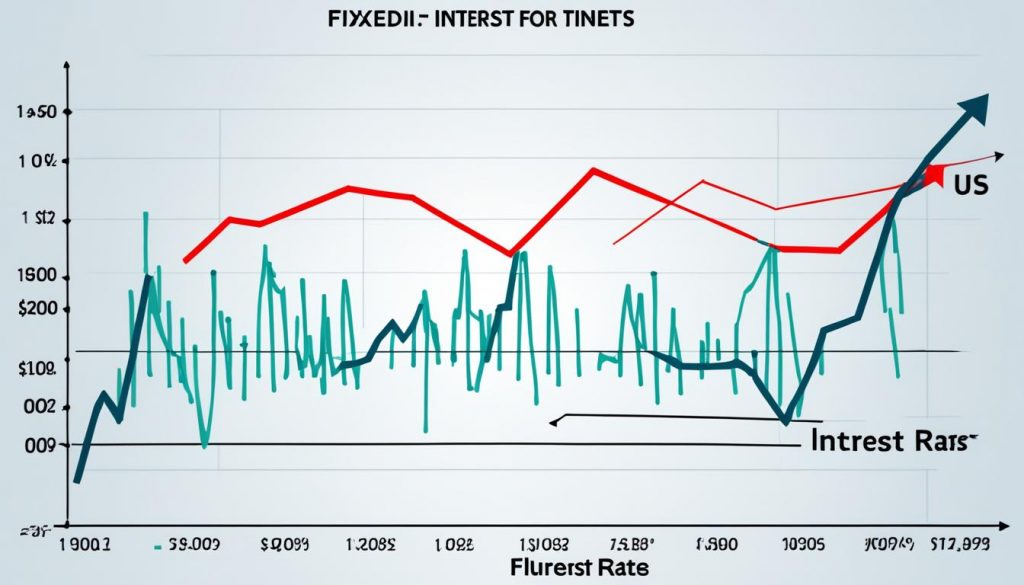
The decision between fixed and floating interest rates hinges on my financial circumstances and risk appetite. If I prefer predictable payments, fixed rates are the better option. Conversely, if I’m open to market fluctuations and potential savings, floating rates could be more cost-effective.
Preparing for Your Home Loan Application
Preparing for a home loan application is crucial for a smooth process. I must gather the right documents needed to showcase my financial situation positively to lenders. This preparation speeds up the approval process and boosts my chances of getting a favorable loan.
First, I need to make a list of essential documents. These include:
- Proof of identity (such as a driver’s license or passport)
- Income verification (pay stubs, tax returns, or bank statements)
- Employment details (a letter from my employer or an employment contract)
- Credit history and score report
- Property documents (agreement to sell, title deed, or registration documents)
- Debt statements (existing loans or credit card debts)
Lenders often look at credit scores, income, and debt-to-income ratios. They assess these factors closely. So, providing accurate and organized documents proves my creditworthiness.
I also need to be ready for questions about my finances. Showing my financial assets and liabilities clearly demonstrates my ability to repay the loan. This openness builds trust with the lender.
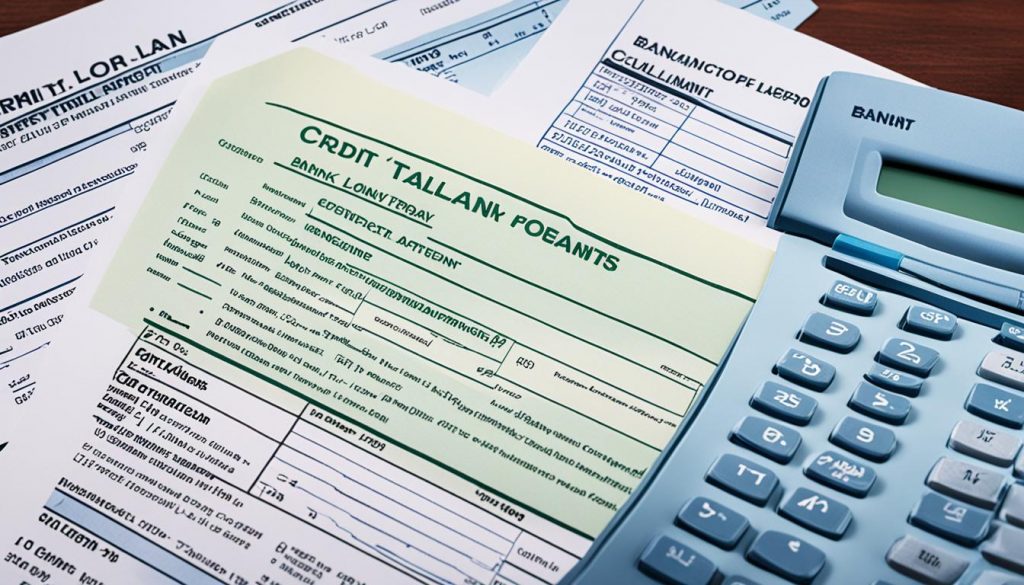
| Document Type | Description | Importance |
|---|---|---|
| Proof of Identity | Valid government-issued ID | Confirms my identity |
| Income Verification | Recent pay stubs, tax returns | Demonstrates my financial stability |
| Employment Details | Letter from employer or contract | Validates job security |
| Credit History Report | Score and debt information | Establishes my creditworthiness |
| Property Documents | Agreement to sell, title deeds | Proves property legitimacy |
| Debt Statements | Existing loan agreements | Assesses total financial obligations |
Being well-prepared with all necessary documents needed for my home loan application boosts my approval chances and secures favorable terms. Thorough preparation is vital for this important step in my homeownership journey.
Conclusion
Grasping the intricacies of how banks calculate EMI on home loans is essential for sound financial planning. A deep understanding of methods like the reducing-balance EMI and flat-rate EMI equips me with the knowledge to make decisions aligned with my financial situation. The EMI formula, which considers principal, interest rates, and loan tenure, helps me better comprehend my repayment path.
The significance of comprehending EMI is paramount, as it aids in budgeting and evaluating the loan’s total cost. Recognizing how prepayments impact my monthly payments allows for strategic planning for the future. This deep insight into EMI calculation not only clarifies my financial commitments but also boosts my ability to manage my finances effectively. It ensures that my home purchase remains a valuable investment.



